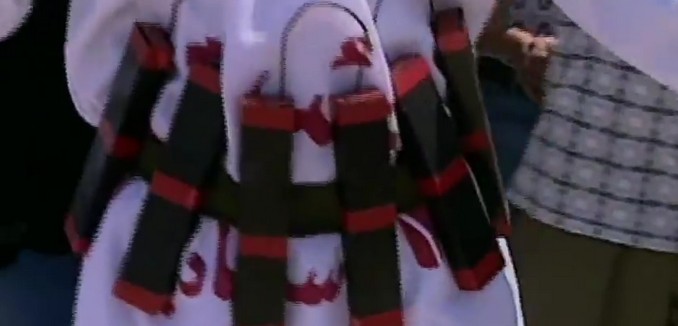Earlier this week The New York Times outlined how a case brought by Stephen Flatow against Iran exposed the chicanery used by major international banks to evade sanctions and do business with the Iranian regime.
Flatow brought a lawsuit against Iran for its financing of Palestinian Islamic Jihad, which was responsible for a bus bombing in Gaza in 1995 that killed his daughter, Alisa. Flatow won a $250 million judgment against Iran but was unable to collect. Instead, he went after the Alavi Foundation, which he alleged was a front for the Iranian government. The suit alerted prosecutors to financial machinations that major banks engaged in to evade the sanctions against Iran.
The trail that ultimately led to BNP began in 2006, when the Manhattan district attorney’s office came upon a lawsuit filed by the father, who blamed Iran for financing the Gaza bus bombing that killed his 20-year-old daughter. Buried in the court filings, prosecutors found a stunning accusation: a charity that owned a gleaming office tower on Fifth Avenue was actually a “front” for the Iranian government, a claim that the prosecutors ultimately verified.
The prosecutors soon discovered that Credit Suisse and Lloyds, two of the world’s most prestigious banks, had acted as Iran’s portal to the United States financial system. To disguise the illicit transactions — the United States is closed for business to Iran — Credit Suisse and Lloyds stripped out the Iranian clients’ names from wire transfers to the Fifth Avenue charity and affiliated entities. The findings led the Manhattan prosecutors and the Justice Department in Washington to announce criminal cases against both banks.
As the suit against other institutions went forward, an informant “approached a rank-and-file prosecutor at the Manhattan district attorney’s office about BNP’s ties to Iran.”
This has resulted in the prosecution of French banking giant BNP, which just settled with prosecutors to pay a nearly $9 billion fine.
A 2010 Wall Street Journal article explains how the banks intentionally circumvented laws prohibiting doing business with Iran.
Credit Suisse, according to court records, removed Iranian names, addresses, telephone numbers and identification codes from payment messages sent to U.S. financial firms. In some cases, the bank then replaced the information by using names such as “Order of a Customer” or “Credit Suisse.”
When the district attorney’s office subpoenaed the European banks and obtained the wire transfer instructions, pieces of the puzzle began to fit together. References to Bank Melli had been scrubbed from the transfer. That signaled to the district attorney’s office that the banks purposely had helped conceal the ties to Bank Melli.
The successful legal proceedings against the Alavi Foundation led to the forfeiture of the skyscraper at 650 Fifth Avenue in Manhattan.
The case brought by Flatow follows the strategy outlined by Nitsana Darshan-Leitner, who was profiled by The Tower Magazine editor David Hazony in The Woman who Makes Jihadis Squirm, which appeared in the February 2014 issue of the magazine. The article points out that “when a judge rules that somebody owes you money, you can take that ruling to courts in other countries around the world, anywhere that person has assets, and make them pay through the local courts.
[Source: DocsOnline / YouTube ]




